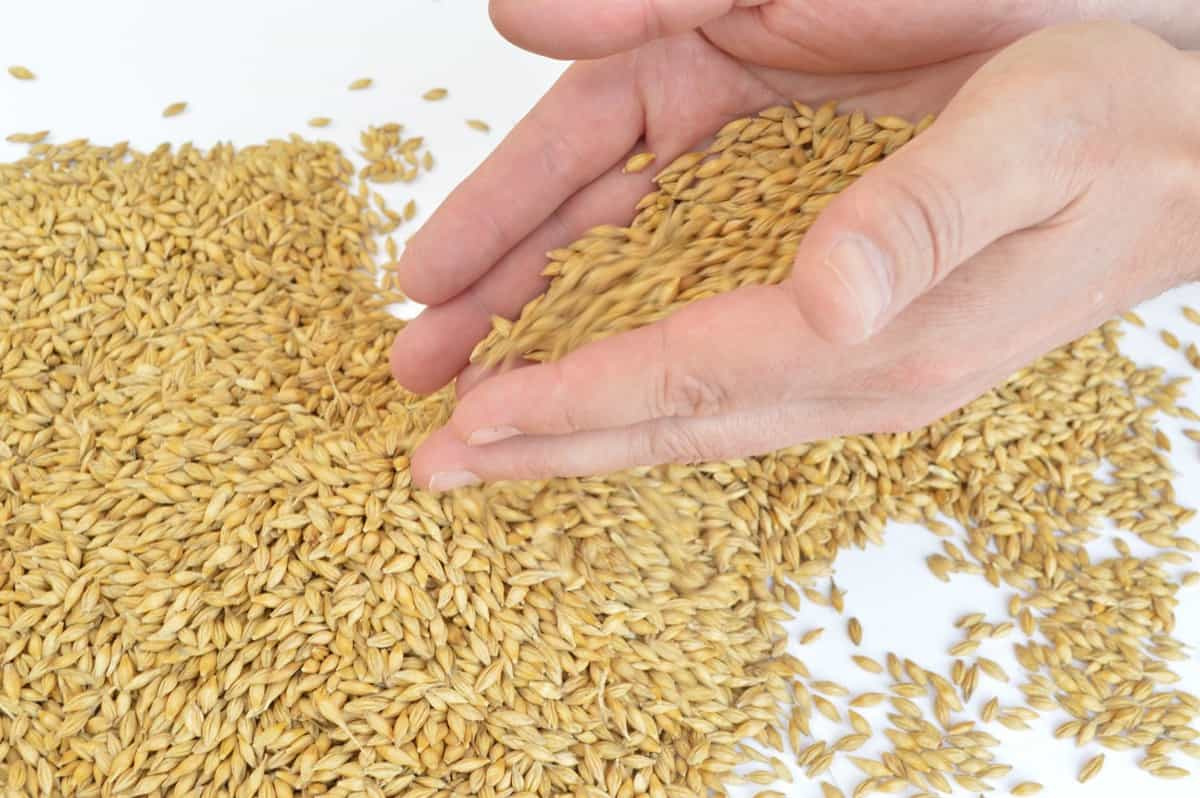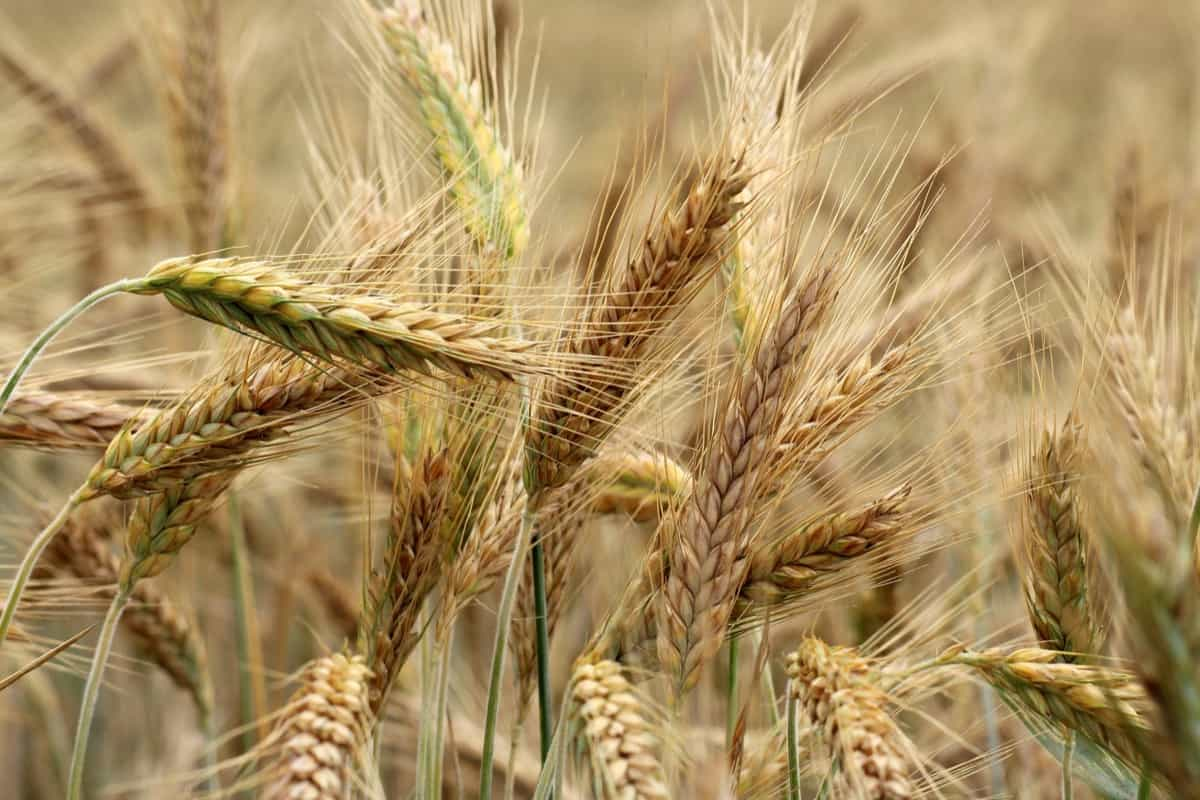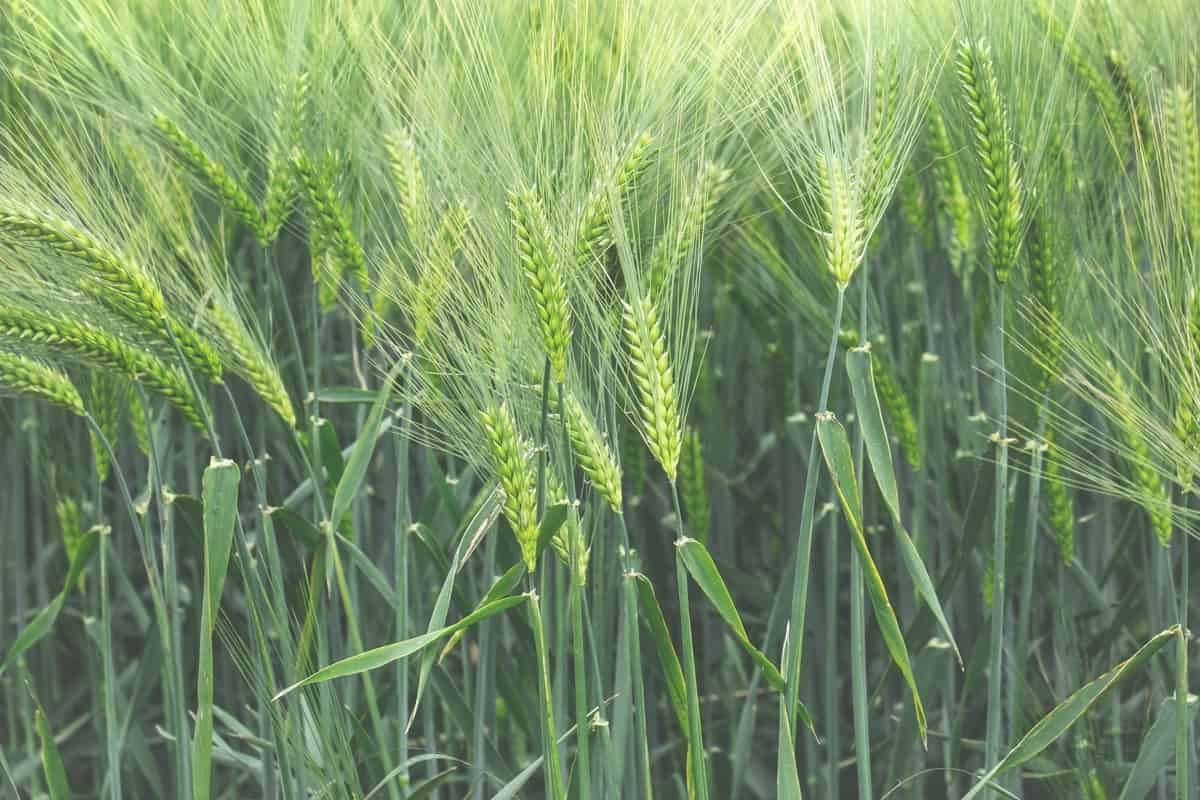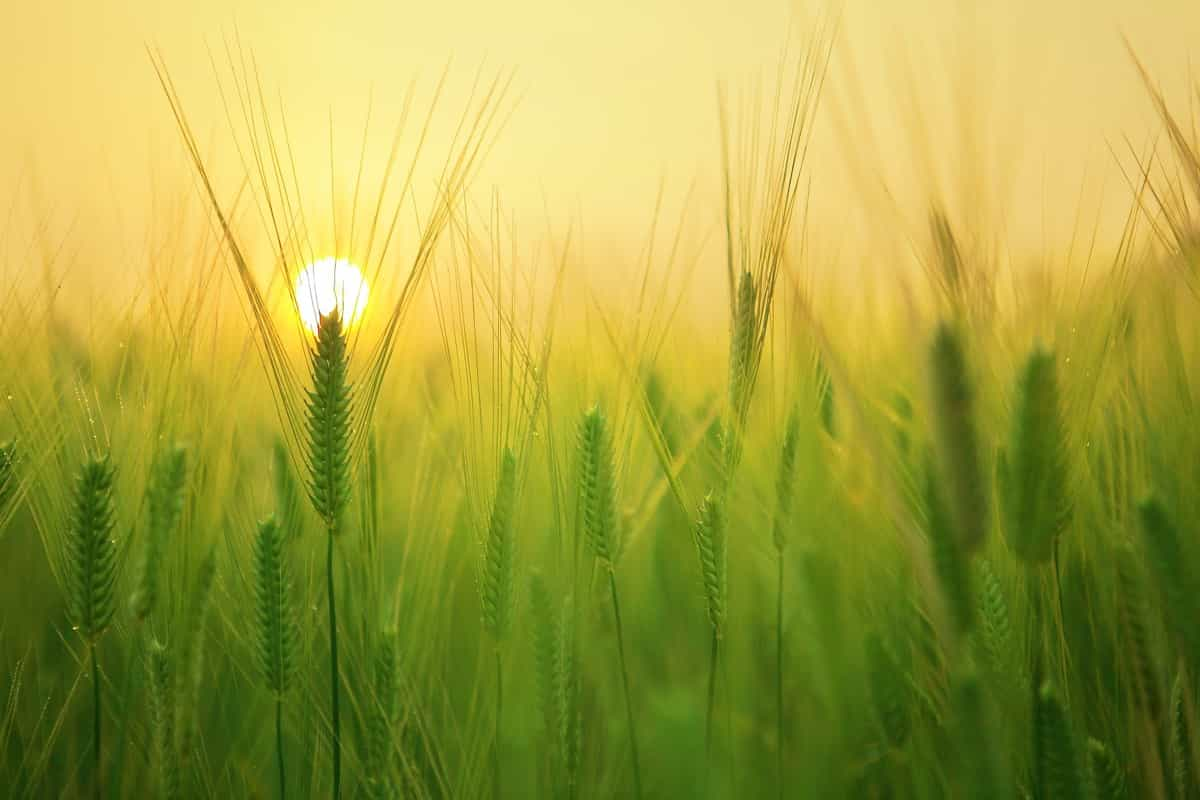Barley is a cereal grain that is widely grown around the world. It is used in brewing, food, and animal feed. It is a hardy plant that can be grown in a variety of climates and soil types. Barley is a good source of dietary fiber, protein, and other nutrients, including vitamins and minerals. It is also a rich source of antioxidants and has been shown to have various health benefits, such as reducing the risk of heart disease and diabetes.

In addition to its use in food and drink, barley is also used in the production of biofuels and other industrial products. It is a hardy plant that can tolerate a wide range of growing conditions, making it suitable for cultivation in many climates. Barley is typically grown as a winter or spring crop. It is sown in late autumn or early spring, depending on the climate, and harvested in the summer.
Barley is usually grown on a rotation with other crops, such as wheat, to improve soil fertility and reduce the risk of pests and diseases. Currently, approximately 70% of global barley production is used as animal fodder, with the remaining 30% used as a fermentable material for beer and certain distilled beverages, as well as a component of various foods. Barley is used in soups and stews, as well as in various cultures’ barley bread. Malt is commonly made from barley grains in a traditional and ancient method.
- Scientific name of Barley: Hordeum vulgare
- The family name of Barley: Gramineae
- Sorghum genus: Sorghum
Organic Barley farming
Common names of Barley in other countries
Barley (English), Gersten (German), Orge (French), Cebada (Spanish), Cevada (Portuguese), Orzo (Italian), 大麦 (Japanese), 麦 (Chinese), 옥수수 (Korean), شعير (Arabic), Orge (French), Cebada (Spanish), Orzo (Italian), Czczo (Polish), Kasha (Russian), Yachaq (Quechua, South America), Jau (Hindi, India), Mugi (Japanese), Juk (Korean), Mijiu (Mandarin, China).
In case you missed it: Best Fertilizer for Barley: Organic, NPK, Requirements, When and How to Apply

World Top 10 producing countries of Barley:
According to the Food and Agriculture Organization of the United Nations (FAO), the top 10 production countries of barley in 2021 were:
- Russia – 20.1 million metric tons
- France – 14.5 million metric tons
- Germany – 13.9 million metric tons
- Canada – 11.9 million metric tons
- Australia – 11.3 million metric tons
- China – 10.5 million metric tons
- Turkey – 9.9 million metric tons
- United States – 8.8 million metric tons
- Argentina – 7.1 million metric tons
- Ukraine – 6.9 million metric tons
Major Barley producing states in India
Punjab, Haryana, Uttar Pradesh, Rajasthan, Madhya Pradesh, Gujarat, Tamil Nadu, Andhra Pradesh, Odisha, Maharashtra.
Health benefits of Barley
Barley is a type of grain that has been enjoyed by humans for centuries, and it has several health benefits. Some of the most notable benefits of barley include:
- Helps with weight loss: Barley is high in fiber, which helps to fill you up and prevent overeating. This can make it a useful tool for weight loss or weight management.
- Improves digestive health: Barley is a good source of both soluble and insoluble fiber, which can help to keep your digestive system running smoothly and prevent constipation.
- Lowers cholesterol levels: Barley contains a type of soluble fiber called beta-glucan, which has been shown to help lower cholesterol levels in the blood.
- May reduce the risk of certain types of cancer: Some studies have found that barley consumption may be linked to a lower risk of certain types of cancer, including colon and breast cancer.
- Helps to regulate blood sugar levels: Barley has a low glycemic index, meaning it is absorbed slowly into the bloodstream and does not cause rapid spikes in blood sugar levels. This can benefit those with diabetes or at risk of developing diabetes.
- Provides essential nutrients: Barley is a good source of essential nutrients, including vitamins and minerals such as iron, magnesium, and B vitamins.
Overall, barley is a nutritious and healthy grain that can be incorporated into various dishes and meals.
A Step-by-step guide for beginners
Varieties of Barley
Thousands of improved and hybrid varieties are grown in various parts of the world. We may not be able to list all the varieties here. Some of the high-yielding cultivars, however, are Copeland, Golden Promise, Aleurone, Optic, Chalice, Pearl, Clipper, Gobi, and Chirano. Contact your local agriculture department to find a high-yielding variety that is appropriate for your region.
In case you missed it: How to Start Organic Farming in Brazil: Business Plan, Key Rules, Cost, Schemes, Loans, and Certification

Soil requirement and land preparation for Barley farming
Barley is a cereal grain that grows best in well-drained soil with a pH between 6.0 and 7.0. It thrives in various soil types, including clay, loam, and sandy soils. However, it is not tolerant of drained or waterlogged soils. Before planting barley, it is important to prepare the land by removing weeds and other debris.
We can do this through tillage or the use of herbicides. We should also test the soil to determine the nutrient levels and pH. Add fertilizers and lime to adjust the soil to the desired levels. Once the land is prepared, the seeds can be planted either by hand or with the use of a drill.
Climate, temperature, and rainfall requirements for Barley farming
It is a hardy crop that can tolerate a wide range of climatic conditions, but it prefers cool temperatures and adequate rainfall.
- Climate: Barley is a cool-season crop that grows best in regions with long, cool winters and short, mild summers. They grow it in areas with average annual temperatures ranging from 10-20°C (50-68°F). It can tolerate frost and light snow, but it is sensitive to heat and drought stress.
- Temperature: Barley grows best in temperatures ranging from 10-20°C (50-68°F). It is a hardy crop that can tolerate frost and cold temperatures, but it is sensitive to heat stress. High temperatures during the flowering stage can reduce grain yield and quality.
- Rainfall: Barley requires adequate moisture for optimal growth and development. It is sensitive to drought stress, which can lead to reduced grain yield and quality. For optimal growth, barley requires around 500-700 mm (20-28 inches) of annual rainfall. It can tolerate dry conditions to some extent, but irrigation may be required in regions with low rainfall or dry soils.
Propagation in Barley farming
Barley is propagated by planting seeds in the soil. The seeds are sowed at a depth of about 1-2 inches in well-drained, fertile soil and spaced about 6 inches apart. Watering should be done to keep the soil moist until the seeds germinate, which takes about 7-10 days. Once the seedlings have emerged, they should be thinned out to about 4-6 inches apart to give them enough space to grow and develop. As the plants grow, they should be fertilized and watered to ensure optimal growth and yield.
Sometimes, farmers may also propagate barley through the use of seedlings or transplants. This involves starting the seeds in pots or trays in a greenhouse or indoor setting and then transplanting the seedlings into the field once they have grown to a sufficient size. Overall, the key to successful propagation in barley farming is to provide the seeds or seedlings with the right combination of soil, water, and nutrients to enable them to grow and thrive.
Seeds and seed rate for Barley
The seeds used for planting barley are small, round, and light-colored. They can be purchased from seed companies or from a previous barley harvest. The seed rate for barley varies depending on the variety, the location, and the intended use of the crop. The seed rate for barley will depend on the variety being planted and the intended use of the crop. The seed rate for barley is between 18-35 kg per acre.
Factors such as soil type, weather, and seed size can also affect the seed rate. Under irrigated conditions, 35 kg of seeds per acre is required, while rain-fed conditions require 45 kg of seeds per acre. When planting barley, it is important to prepare the soil and choose a location with good drainage. Barley seeds should be planted at a depth of about 1 to 2 inches and spaced about 6 inches apart in rows.
In case you missed it: How this Farmer Made 42 Lakhs from 5 Acres of Organic Pomegranate Farming: Fruit Cultivation Sucess Story in India

Sowing and spacing in Barley farming
Planting the seeds at the proper depth and spacing is important to ensure optimal growth. Barley seeds should be planted 1 to 2 inches deep and spaced 6 to 8 inches apart in rows that are spaced 18 to 30 inches apart. Several sowing methods can be used in barley farming, including direct seeding, transplanting, broadcasting, drilling, and inter-cropping. Use row-to-row spacing of 22.5 cm. In case of delayed sowing, use the spacing of 18-20 cm.
Organic manures and bio-fertilizers in Barley farming
Organic manures and bio-fertilizers are important for barley farming as they can help improve soil fertility and structure and provide essential nutrients to the crop. Organic manures are made from organic materials, such as compost, animal manure, and green manures (plants grown specifically to be incorporated back into the soil). They help improve soil structure and water-holding capacity and also provide a range of essential nutrients, including nitrogen, phosphorus, and potassium.
Bio-fertilizers are living microorganisms that can be applied to the soil or plants to provide essential nutrients. They can include nitrogen-fixing bacteria, which help convert atmospheric nitrogen into a form that plants can use, and mycorrhizal fungi, which help plants absorb nutrients from the soil. In barley farming, organic manures and bio-fertilizers can be used in combination with fertilizers to provide a balanced nutrient supply to the crop.
Choosing the right type and amount of fertilizer is important based on soil type, crop requirements, and local growing conditions. It’s also important to follow best management practices to minimize the risk of nutrient loss and environmental impacts. Using the right amount of manures and fertilizers is essential, as overuse can lead to soil degradation and pollution. Following the recommended application rates and timing is also essential to ensure optimal crop growth and yield.
Irrigation in Barley farming
In barley farming, irrigation is often necessary to ensure that the plants receive enough water to grow and produce high yields. Drip irrigation involves using a system of pipes, hoses, and emitters to deliver water to the roots of the plants. During the life cycle of the barley plants, 2-3 irrigations are required. At crown root initiation, apply the first irrigation (for example, 25 to 30 days after sowing the seeds). Then, at the panicle emergence stage, apply a second irrigation.
Irrigation can be controlled using various techniques, such as using sensors to measure soil moisture levels, weather data to predict when irrigation is needed, and computer software to schedule irrigation events. Irrigation is important in barley farming because it can help to:
- Improve crop yields:
- Reduce stress on the plants:
- Improve crop quality:
- Increase the efficiency of fertilizers:
Weed control in Barley farming
- Cultural weed control: This involves crop rotation, soil tillage, and planting cover crops to reduce weed growth.
- Biological weed control: Using predatory insects or fungi to control weeds can be an effective and eco-friendly option.
- Mechanical weed control: Hand weeding or using mechanical tools such as hoes or cultivators can help control weeds in barley fields.
- Mulching: Covering the soil with a layer of mulch, such as straw or hay, can help prevent weed seeds from germinating and reduce weed growth.
As a final strategy if other methods fail to control Chemical weed control is used. Herbicides can control weeds in barley farming. These should be applied according to the label instructions to avoid damaging the barley plants.
Organic pest and diseases management in Barley farming
Organic pest and disease management in barley farming involves using non-synthetic methods to control pests and diseases that can damage or reduce the barley crop yield. Some common pests and diseases that can affect barley include: aphids, armyworms, wireworms, and sting bugs are the most common pests found in barley production. Crop yields will be significantly reduced if these pests are not controlled.
In case you missed it: How to Start Organic Farming in the Netherlands: Crops, Schemes, Business Plan, Cost, and Profit

The best ways to avoid these pests in barley crops are to uproot and burn stubbles after germination and to burn panicle residues after threshing. Some major diseases found in barley are Flag smut, Powdery Mildew, Barley yellow dwarf virus, Powdery mildew, Rust, Slugs and snails. To control these pests and diseases in an organic farming system, farmers can use a variety of methods, including:
- Crop rotation: By planting different crops in a specific order, farmers can reduce the build-up of pests and diseases in the soil.
- Biological control: Farmers can use natural predators, such as ladybugs and lacewings, to control pest populations.
One method of biological control is the use of natural predators, such as insects and birds, to control pest populations. For example, ladybugs and lacewings can be introduced to a barley field to control aphids, while birds such as sparrows and finches can help control insect populations. Another method of biological control is the use of microbial agents, such as bacteria and fungi, to control diseases in barley.
For example, Bacillus thuringiensis (Bt) is a bacterium that is effective at controlling insect pests, while Trichoderma is a fungus that can help control diseases such as root rot. Other methods of biological control include using plant-derived compounds and the promotion of beneficial insects and animals.
Plant-derived compounds, such as neem oil, can be used to control pests and diseases, while the promotion of beneficial insects and animals, such as bees and predatory mites, can help to keep pest populations in check. Overall, biological control methods are a sustainable and eco-friendly way to control pests and diseases in barley farming and can help reduce the need for chemical pesticides and fungicides.
- Cultural control: Farmers can use methods such as mulching and proper watering and fertilization to create a healthy plant environment that is less susceptible to pest and disease problems.
- Physical control: Farmers can use methods such as handpicking and trapping to control pest populations.
Threshing and yields in Barley farming
Threshing is separating the grains of barley from the straw and chaff. They do this using a threshing machine, which uses a combination of mechanical force and air to separate the grains from the straw. They typically measure the yield of a barley crop in terms of the amount of grain produced per acre of land.
Factors that can affect yield include the variety of barley being grown, the soil fertility, the amount of water and sunlight received, and pests and diseases. On average, you can expect a yield of 1.8 to 2 tonnes per acre. However, yields can vary depending on the field’s specific conditions and the seed quality. Higher yields can be achieved through proper field preparation, timely planting, and effective pest and disease management.
In case you missed it: How this Farmer Making 60 Lakhs from 6 Acres Organic Grape Farm: Organic Grape Cultivation Sucess Story in India

Harvesting and storage in Barley farming
Harvesting in barley farming occurs when the barley grain has reached maturity, which is about 3-4 months after planting. When the grain has 25% to 30% of its weight in water, it’s appropriate to harvest it. For manual harvesting, use serrated edge sickles. The optimal time for harvesting is when the grain is dry, and the straw is yellowed. To harvest, they cut the barley with a combined harvester, separating the grain from the straw. The straw is often baled and used as animal bedding or mulch, while the grain is collected in a hopper on the combine.
After harvesting, the grain is stored in a dry, well-ventilated location to prevent moisture and pests from damaging the grain. Depending on the harvest size and the storage facilities available, it may be stored in bags, bins, or silos. Proper storage is important to ensure the grain remains in good condition until it is ready to be sold or used in feed or food products. In addition, the grain may be treated with chemicals to prevent pests and mold growth, and it may be monitored to ensure it remains in good condition.
- Modern Sheep Farming Technology: The Future of Sheep Husbandry
- Goat Farming Technology: The Future of Goat Husbandry
- How to Build a Low-budget Goat Shed: Cheap Ideas and Tips
- Goat Farming Training Programs in India: A Beginner’s Guide
- Types of Pesticides Used in Agriculture: A Beginner’s Guide
- Economical Aquaculture: A Guide to Low-Budget Fish Farming
- 15 Common Planting Errors That Can Doom Your Fruit Trees
- How to Make Houseplants Bushy: Effective Tips and Ideas
- Innovative Strategies for Boosting Coconut Pollination and Yield
- Pollination Strategies for Maximum Pumpkin Yield
- The Complete Guide to Chicken Fattening: Strategies for Maximum Growth
- Natural Solutions for Tulip Problems: 100% Effective Remedies for Leaf and Bulb-Related Issues
- Revolutionizing Citrus Preservation: Towards a Healthier, Greener Future
- Natural Solutions for Peony Leaf and Flower Problems: 100% Effective Remedies
- Maximizing Profits with Avocado Contract Farming in India: A Comprehensive Guide
- Natural Solutions for Hydrangea Problems: 100% Effective Remedies for Leaf and Flowers
- The Ultimate Guide to Choosing the Perfect Foliage Friend: Bringing Life Indoors
- From Sunlight to Sustainability: 15 Ways to Use Solar Technology in Agriculture
- The Ultimate Guide to Dong Tao Chicken: Exploring from History to Raising
- The Eco-Friendly Makeover: How to Convert Your Unused Swimming Pool into a Fish Pond
- Mastering the Art of Delaware Chicken Farming: Essentials for Healthy Backyard Flocks
- 20 Best Homemade Fertilizers for Money Plant: DIY Recipes and Application Methods
- How to Craft a Comprehensive Free-Range Chicken Farming Business Plan
- Brighten Your Flock: Raising Easter Egger Chickens for Beauty and Bounty
- How to Optimize Your Poultry Egg Farm Business Plan with These Strategies
- Subsidy for Spirulina Cultivation: How Indian Government Schemes Encouraging Spirulina Farmers
- Ultimate Guide to Raising Dominique Chickens: Breeding, Feeding, Egg-Production, and Care
- Mastering the Art of Raising Jersey Giant Chickens: Care, Feeding, and More
- Ultimate Guide to Raising Legbar Chickens: Breeding, Farming Practices, Diet, Egg-Production
- How to Raise Welsummer Chickens: A Comprehensive Guide for Beginners
- How to Protect Indoor Plants in Winter: A Comprehensive Guide
- Ultimate Guide to Grow Bag Gardening: Tips, Tricks, and Planting Ideas for Urban Gardeners
- Guide to Lotus Cultivation: How to Propagate, Plant, Grow, Care, Cost, and Profit
- Agriculture Drone Subsidy Scheme: Government Kisan Subsidy, License, and How to Apply Online
- Ultimate Guide to Raising Araucana Chickens: Breed Profile, Farming Economics, Diet, and Care
- Bringing Hydroponics to Classroom: Importance, Benefits of Learning for School Students
Thank you for your information. This is very important for me and I’m very interested in your information.